See, make, eat and feel the charm of Banko-Yaki BankonoSatoCenter
We bring you a comprehensive report on BankonoSatoCenter a hub that promotes the appeal of Banko-Yaki Banko-Yaki through exhibitions, a shop, and pottery experiences.

Article production / Mie Travel Ambassador Osmanthus
▼Table of contents
- What is Banko-Yaki?
- What is BankonoSatoCenter?
- Make it! Banko-Yaki
- Buy! Banko-Yaki
- Japanese cuisine served on Banko-Yaki ware
- See! Banko-Yaki
- access
- parking
*The information in this article is current as of May 2024.
What is Banko-Yaki?
Banko-Yaki is a type of pottery that began to be made in the mid-Edo period, and is characterized by its excellent heat resistance due to the use of a mineral called petalite. In the Meiji period, research and production of Western tableware such as Western plates and coffee cups progressed, and with the opening of Yokkaichi Port, it was exported overseas. It is a representative local industry of Yokkaichi YokkaichiCity, Mie Prefecture, and is also certified as a Mie brand.
What kind of image do you have of Banko-Yaki? Clay pots are Banko-Yaki 's signature product, accounting for approximately 80% of domestic production. It would not be an exaggeration to say that most of the domestically produced clay pots you see around town Banko-Yaki. In recent years, they have come in a wide variety of sizes and shapes, and a wide range of products have been developed, including ceramic plates, tajine pots, rice pots, and charcoal stoves. In particular, there has been active development of clay pots that are compatible with induction cookers using advanced technology.

Banko-eternal
Banko-Yaki began in the mid-Edo period when a wealthy Kuwana merchant, Nunami Rozan, opened a kiln in what is now Obuke, AsahiTown obuke, Mie Prefecture. Rozan stamped his works with the words "Banko" or "Banko Fueki" so that they would remain unchanged forever. This is said to be the origin of the name Banko-Yaki.
There is a wide variety of pottery in Banko-Yaki, from tableware and vases that add color to daily life to industrial product shapes. The richness of the variety is such that it is said that "the distinctive feature of Banko-Yaki is the 'Banko' mark."
In a region with scarce resources such as clay, our predecessors honed their techniques, conducted extensive research, and produced a wide variety of products sensitive to the needs of each era. Through their efforts and ingenuity, they have continued the traditions of Banko-Yaki for 300 years, and developed into one of Japan's leading ceramic production areas.
The period from 300 years since the birth of the founder of Banko ware, Numanami Rozan, in 2018 to 300 years from the opening of the kiln, 20 years from now, has been designated the "BANKO300th" anniversary, and we are developing and promoting various projects to pass on the traditions of Banko-Yaki, passed down by our predecessors, to future generations.

The history of Banko-Yaki
[Banko with a section]
About half a century after Rozan's death, the brothers Mori Yusetsu and Senshu opened a kiln with the aim of reviving Banko-Yaki. Gifted with artistic talents - the elder Yusetsu specialising in woodworking, and the younger Chiaki a genius inventor - the two were keen researchers and produced new Banko-Yaki one after another. They actively embraced the trends that had changed since Rozan's time, such as sencha tea and Japanese classical literature, and invented katabanko, which uses wooden molds to form teapots, shoenjuyu, a distinctive vibrant pink glaze using gold, and Yamato-e painting using powdered paint. Banko-Yaki revived by Yusetsu and his friends is mainly known as "Yusetsu Banko".
[Yokkaichi Banko]
Around the same time, Yamanaka Chuzaemon, who was the village mayor of Suenaga Village in Yokkaichi, noticed the popularity of Arise Banko and wanted to introduce it to his village to help the people. The village was sandwiched between the Kaizo River and the Mitaki River, and had fallen into such poverty due to repeated flooding that it was unable to pay its annual tax. Chuzaemon spent his own money to research the pottery method. After 20 years of research, including learning from the Kaizoan Kiln, which had already started at Yuifukuji Temple on the Higashiakura River in Yokkaichi, he finally established a method for mass production in 1870, and provided the villagers with tools and clay to train them as potters. This was the beginning of "Yokkaichi Banko."
After many years of research, the production method was finally established, and Chuzaemon generously shared it with the public. As a result, many people in Yokkaichi entered the world Banko-Yaki and many excellent potters were nurtured.
With the development of Yokkaichi Port and railways, Banko-Yaki became popular not only domestically but also for export, establishing a foundation as a local industry.

Petalite problem
The mineral petalite used in Banko-Yaki ware increases the heat resistance of pottery, and since 1959 it has been mixed with clay to fire earthenware pots, accounting for about 40% of the raw materials.
Petalite contains lithium, so there is growing global demand for it as a material for lithium-ion batteries for electric vehicles (EVs). Last year, a shortage of petalite was reported, but with the help of many people in YokkaichiCity, we are continuing to make efforts to continue producing clay pots in the future.

What is BankonoSatoCenter?
BankonoSatoCenter is a base for promoting the charms of Banko-Yaki in a comprehensive manner, offering a variety of experience courses, such as Banko-Yaki exhibitions, product viewing, and pottery experiences such as painting and using a potter's wheel, as well as regular pottery classes where you can learn in earnest. During the summer holidays, experience classes for children are also held. Utsuwatei, which offers a selection of products unique to the production area, also offers great value products. At Aikawa on the second floor, you can enjoy daily lunches and sweets, and in the evening, by reservation, you can enjoy banquet meals such as puffer fish, soft-shelled turtle, wild eel, and hot pot dishes made with Banko-Yaki. It is a place where you can see, make, eat, and experience the charms of Banko-Yaki.
It also serves as the second venue for the Yokkaichi Bankoyaki Pottery Festival, held every May at Yokkaichi Dome.
For information on the 2024 Yokkaichi Bankoyaki Pottery Festival, click here
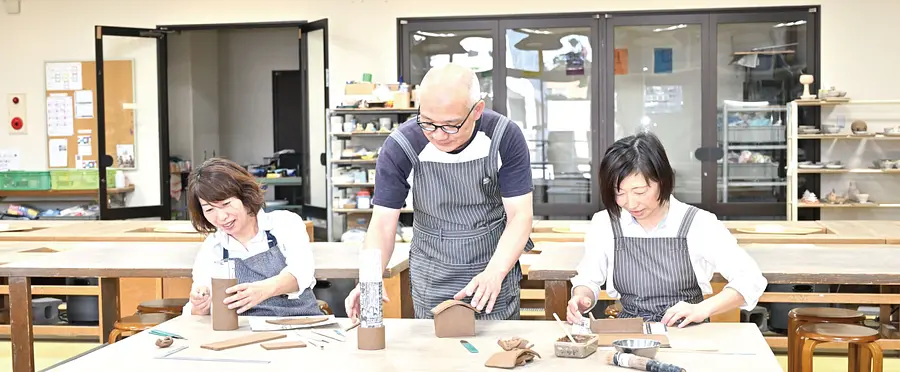
Make it! Banko-Yaki
I want to try making my own Banko-Yaki at least once
The pottery studio on the first floor of the hall holds casual trial classes (reservations required) as well as regular classes for those who want to learn more.
Pottery experience course
Price (per person): Hand massage... 3,500 yen
Electric potter's wheel... 4,000 yen
*You can make up to two of each with 1kg of clay.
・Time required: About 2 hours
Painting/Hand Carving Experience Course
Price: Cups, teacups, plates... from 1,500 yen
Earthenware pot (6th size and up)・・・・3,000 yen and up
Mosquito repellent pig・・・・・・2,500 yen~
Hand-carved (teacup)・・・・From 2,000 yen
・Time required: Approximately 90 minutes
Regular pottery classes
・Membership fee: 6,000 yen
Tuition: 4 times a month course...8,000 yen
Three times a month course: 7,000 yen
Twice a month course...6,000 yen
Once a month course: 3,500 yen
・Clay ticket (including firing fee)
11 sheets・・・14,000 yen
5 sheets... 7,000 yen
*Special clays and base materials require additional costs

Buy! Banko-Yaki
Direct from the farm shop "Utsuwatei"
BankonoSatoCenter, is a shop where you can see Banko-Yaki products from various kilns all in one place. It boasts the prices and variety of products that can only be found in the production area. There are a variety of products to brighten up your life, from heat-resistant products such as clay pots and ceramic plates, which are the number one domestically produced, to purple clay teapots that have long been used by tea lovers, tableware, and vases.
<Business hours: 10:00-17:00> We also have an online shop.

Japanese cuisine served on Banko-Yaki ware
At Aikawa on the second floor of the hall, you can enjoy a wide variety of dishes made with seasonal ingredients, with a focus on Japanese cuisine.
business hours
Lunch: 12:00-15:00 Café: until 17:00
Open in the evenings by reservation
menu
【lunch】
Daily lunch 1,200 yen
Yokkaichi Mazemen 1,200 yen (Sundays and Wednesdays, limited to 10 meals per day)
Daily special + lava steak 2,300 yen *Reservation required in advance
Lunch coffee 200 yen
【drink】
kabusetea 500 yen
*Served in Banko-Yaki teapot.
Coffee 400 yen
【sweetness】
Zenzai 500 yen
Amazake 300 yen
Seasonal sweets 300 yen
[Evening meals] *Reservations must be made in advance for evening meals.
Aikawa Kaiseki course 4,500 yen
Seasonal Kaiseki Course from 5,500 yen
Chef's choice course from 9,000 yen
Blowfish dishes, soft-shelled turtle dishes, wild eel dishes, hot pot dishes using Banko-Yaki, etc.
Takeout Menu
The chef makes his dishes using fresh ingredients that he purchases daily.
If you make a reservation at least three days in advance, you can order bento boxes (starting from 1,200 yen) and side dishes according to your budget.
Same-day reservations,
Rolled egg made by an authentic Japanese chef 400 yen
Seasonal stew from 500 yen
Daily side dish from 500 yen

See! Banko-Yaki
Permanent Exhibition Room
The permanent exhibition room at the back of the exhibition hall displays Banko-Yaki from the Edo period to the present.
When the port of Yokkaichi was opened, Banko-Yaki was exported overseas. For the overseas market, unusual designs were given to teapots and teapots with quail and elephant motifs.
During the war in the Showa era, firebricks for military use and substitute pottery to replace metals that were in short supply were produced. You can learn about this process while looking at actual pottery in the permanent exhibition.

Special Exhibition Room
The special exhibition room holds various exhibitions based on different themes each time.
The Banko Heat-Resistant Pottery Exhibition will be held from the end of April 2024. It will introduce and display the history of heat-resistant pottery, which was invented using petalite clay pots and then went on to mass production and rapid development.
As the rapid economic growth of the country progressed, the demand for clay pots increased, and high-quality clay pots began to be produced in larger quantities and in a more stable manner. "Hana Mishima", which has become synonymous with clay pots, was born. Around this time, the prefecture's share of the national clay pot market reached about 80%, and the prefecture established itself as a famous clay pot production area.
Since the Great Hanshin-Awaji Earthquake in 1995, the number of all-electric homes has increased, and the demand for clay pots that are compatible with induction heating rather than direct heat has risen. This is how induction-compatible Banko-Yaki was born.
Since 2010, late marriages and declining birth rates have led to a shift from large clay pots to smaller ones, and the need for single-person clay pots has increased. With the development of social media, a category of "eye-catching" tableware was born, such as heat-resistant dishes like ajillo dishes. Banko-Yaki can be cooked and served directly on the table, was born.
We are holding an exhibition where you can see this process through actual works.

Stairs
Works from last year's Yokkaichi Banko Ceramics Competition are on display on the wall of the stairs leading from the first floor to the second floor.
You can also find cute artwork with animal motifs.
Multipurpose Hall
From Thursday, May 16th to Sunday, May 19th, 2024, the 38th Yokkaichi Banko Ceramic Competition 2024 will have an exhibition of works from the multipurpose hall on the third floor. This year's theme is "Celebratory Vessels." Eight fun, festive works created by artists from within and outside the prefecture that can be used at celebratory occasions will be on display. After the exhibition period ends, the works will be replaced with last year's works and will continue to be exhibited on the wall of the stairs.

access
Address: 4-8 Toeicho YokkaichiCity Mie Prefecture, 510-0035
℡ 059-330-2020
Business hours: 10:00-17:00
Closed on Mondays (except for public holidays), summer holidays, and New Year's holidays
The latest information is posted on Instagram
access
By train
・5 minutes walk from Kawaramachi (Banko-Yaki no Sato) Station on the Kintetsu Nagoya Line
・30 minutes walk from Kintetsu Yokkaichi Station on the Kintetsu Nagoya Line
・35 minutes walk from JR Yokkaichi Station
By car
・15 minutes from Mie Kawagoe IC on the Isewan Expressway
・13 minutes from Yokkaichi Higashi IC on the Tomei-Han Expressway
・20 minutes from Yokkaichi IC on the Tomei-Han Expressway

parking
There is parking space for 39 cars and 2 buses.
From the front of the hall: Go north on the road in front of the hall, turn right at the second corner, and you will see the parking lot sign on your right.
From National Route 1: Turn west at the Toueicho intersection (in front of Hotel Route Inn), go straight and you will see a parking lot sign on your left.
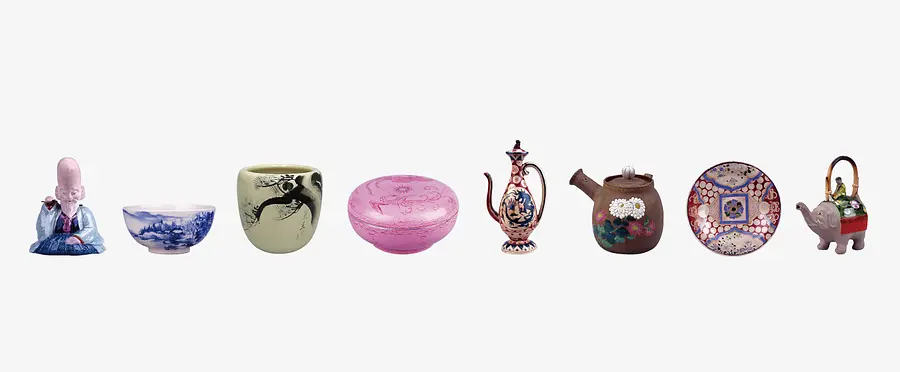
How was it?
I've been to BankonoSatoCenter before to try out pottery, look for affordable tableware, and for lunch, but I've never seen the whole thing. Looking back, I realized it's a place to see, eat, buy, and enjoy. Why not visit BankonoSatoCenter Banko-Yaki to find your very own special Banko ware?
Nearby spots

直線距離:1m
BankonoSatoCenter

直線距離:3m
BankonoSatoCenter

直線距離:6m
BankonoSatoCenter “Pottery Class”

直線距離:58m
Banko Shrine

直線距離:194m
Hotel Route Inn Yokkaichi
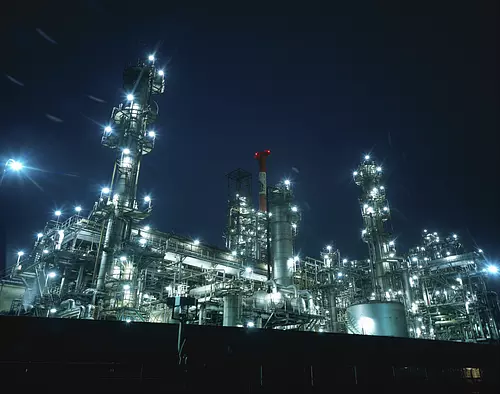
直線距離:223m
Daiichi Kanko Co., Ltd.

直線距離:722m
Naga-Mochi

直線距離:887m
Kofuugama
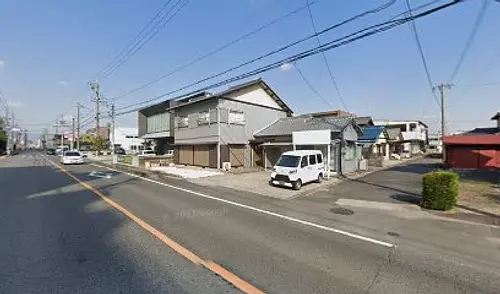
直線距離:984m
YokkaichiCity Shimizu-cho Minpaku

直線距離:991m
Nishiakura River Green Pear Wild Area [Nationally Designated Natural Monument]

直線距離:1.0km
Business Ryokan Yamatoso Shinhama Branch

直線距離:1.1km
Business Hotel Nishiura
nearby events

Date: Friday, November 1, 2024 - Friday, February 28, 2025
直線距離:1.1km
YOKKAICHI WINTER ILLUMINATION

Date: Friday, April 1, 2024 - Monday, September 30, 2024...
直線距離:3.1km
"Yokkaichi Petrochemical Complex Night View Cruise 2024" is now on!
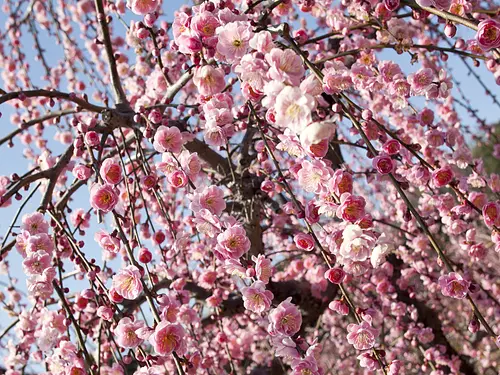
Date: Mid-February to mid-March 2025
直線距離:8.7km
Plum blossoms at Sugawara Shrine
![[New Year's visit] Tsubakinakato-JinjaShrine](https://www.kankomie.or.jp/assets/no_thumb_330_220-b92d6e1d59ef607a7e7b159cb7512e62277106a0b4528087c30473b5d33e1fd6.webp)
Date: Wednesday, January 1, 2025 - Friday, January 3, 2025
直線距離:8.8km
[New Year's visit] Tsubakinakato-JinjaShrine

Date: Opening on Thursday, December 19, 2024
直線距離:9.2km
Takaoka Farm Strawberry Picking

Date: Tuesday, December 24, 2024
直線距離:10.4km
Ise Grand Kagura

Date: January 1, 2025 (Wed) - January 7, 2025 (Tue)
直線距離:11.0km
Daifukudaji Temple New Year's visit

Date: Monday, February 3, 2025
直線距離:11.0km
Daifukudaji Temple Setsubun Festival

Date: Sunday, December 8, 2024, from 2 p.m.
直線距離:11.1km
The 36th Toin "Japanese Symphony No. 9" Concert

Date: Saturday, October 19, 2024 - Sunday, December 8, 2024
直線距離:11.1km
The 33rd KuwanaCity Arts and Culture Festival
![[KuwanaCity Museum] Special Exhibition Collaboration - Viatin Mie, the trajectory of 2024](https://www.kankomie.or.jp/assets/no_thumb_330_220-b92d6e1d59ef607a7e7b159cb7512e62277106a0b4528087c30473b5d33e1fd6.webp)
Date: Saturday, December 14, 2024 to Sunday, December 22, 2024
直線距離:11.3km
[KuwanaCity Museum] Special Exhibition Collaboration - Viatin Mie, the trajectory of 2024
![[KuwanaCity Museum] New Year's Special Exhibition: Very Good Things](https://www.kankomie.or.jp/assets/no_thumb_330_220-b92d6e1d59ef607a7e7b159cb7512e62277106a0b4528087c30473b5d33e1fd6.webp)
Date: Saturday, January 11, 2025 to Monday, February 24, 2025 (National Holiday)
直線距離:11.3km
[KuwanaCity Museum] New Year's Special Exhibition: Very Good Things
Plays and experiences nearby
直線距離:4.5km
Pottery experience for adults: Make a sake cup with Yokkaichi Banko-Yaki ~Yokkaichi Gastronomy Tourism~
直線距離:7.4km
Natural hot spring flowing Yuyu Kaikan

直線距離:7.5km
haru strawberry farm strawberry picking

直線距離:7.6km
Ainari Berry (Yokkaichi) Strawberry picking

直線距離:8.3km
Strawberry House Komonoen

直線距離:9.6km
Summer Vacation Children's Experience Museum 2024

直線距離:10.3km
Sakura Berries Garden Blueberry Picking 2024
![[Come empty-handed, no reservations required] Experience an open-air bath surrounded by nature! One-day hot spring “YuaminoShima” is one of the largest in Japan!](https://www.kankomie.or.jp/rails/active_storage/representations/proxy/eyJfcmFpbHMiOnsibWVzc2FnZSI6IkJBaHBBcDBpIiwiZXhwIjpudWxsLCJwdXIiOiJibG9iX2lkIn19--fab0109693f71819669f118e8aeb86958a65d276/eyJfcmFpbHMiOnsibWVzc2FnZSI6IkJBaDdCem9MWm05eWJXRjBPZ2wzWldKd09oSnlaWE5wZW1WZmRHOWZabWwwV3dkcEF2UUJNQT09IiwiZXhwIjpudWxsLCJwdXIiOiJ2YXJpYXRpb24ifX0=--8d6bc4b517fae43c9e30c66a38f93836dd92b535/488_1_org.jpg)
直線距離:10.7km
[Come empty-handed, no reservations required] Experience an open-air bath surrounded by nature! One-day hot spring “YuaminoShima” is one of the largest in Japan!

直線距離:10.7km
The ultimate bedrock bathing experience at a day trip hot spring “Yuami no Ganbanyoku”

直線距離:10.8km
Enjoy summer water fun in one of the world's largest jumbo seawater pools!
![Limited to 20 people per day! Application for 1 person OK [Hotel Hanamizuki, luxury lunch course & spectacular view! "YuaminoShima" plan with the finest open-air bath experience]](https://www.kankomie.or.jp/rails/active_storage/representations/proxy/eyJfcmFpbHMiOnsibWVzc2FnZSI6IkJBaHBBcVFpIiwiZXhwIjpudWxsLCJwdXIiOiJibG9iX2lkIn19--5e54e7004c6724ca3680f7b119439aea0cc68def/eyJfcmFpbHMiOnsibWVzc2FnZSI6IkJBaDdCem9MWm05eWJXRjBPZ2wzWldKd09oSnlaWE5wZW1WZmRHOWZabWwwV3dkcEF2UUJNQT09IiwiZXhwIjpudWxsLCJwdXIiOiJ2YXJpYXRpb24ifX0=--8d6bc4b517fae43c9e30c66a38f93836dd92b535/489_1_org.jpg)
直線距離:11.1km
Limited to 20 people per day! Application for 1 person OK [Hotel Hanamizuki, luxury lunch course & spectacular view! "YuaminoShima" plan with the finest open-air bath experience]

直線距離:11.1km
Let's play all the thrilling machines at one of the largest amusement parks in Japan!
| Category | |
|---|---|
| season | |
| area |



